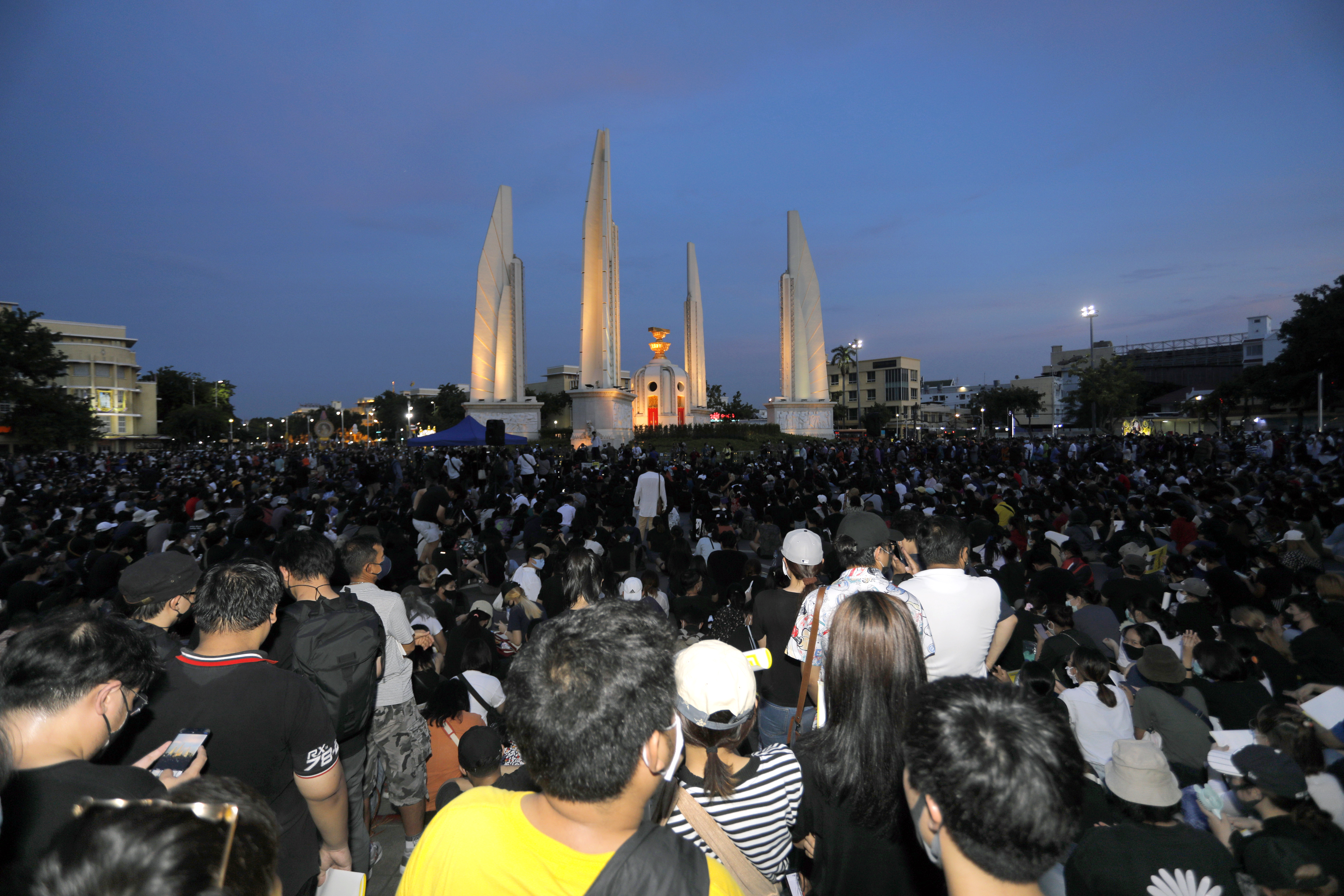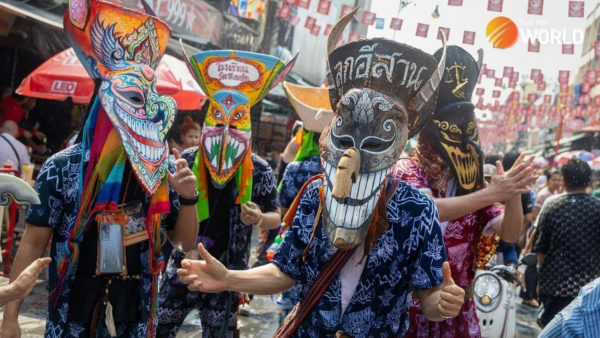Whimsy grabs attention, but students need more to be taken seriously

Creative student rallies ranging from an anime-themed “Hamtaro Run” to a pomelo-eating protest may be successful in attracting the young generation, but they will need crystal-clear demands and ideology to win their battle against the government, experts say.
The return of student rallies against the Prayut government has made national headlines – but more for their whimsical tactics rather than the number of participants.
Defying the four-month-old state of emergency, students took to the streets on July 18 to hold the biggest anti-government rally since COVID-19 hit the country. Organised by a group called the Free Youth Movement, the first rally drew more than 2,000 students and young people.
The group vowed another protest in two weeks if their demands – dissolution of Parliament, redrafting of the Constitution and an end to harassment of government critics – are not met.
The first wave of student rallies began in February, triggered by the Constitutional Court’s decision to disband the Future Forward Party, an opposition party popular among the youth that came third in the 2019 general election. Organisers of this protest relied on social media to mobilise support, taking swipes at “dictatorship”, the court and government supporters alongside hashtags of their universities and schools.
In the second wave, flash mobs switched the focus to creativity, making each group’s demonstration unique. Since last weekend, Bangkok’s Democracy Monument has hosted protests ranging from an LGBTQ rally to the “Hamtaro Run” and pomelo-themed demonstrations, with more planned in the capital and other provinces.
The “Let’s Run, Hamtaro” event (#วิ่งกันนะแฮมทาโร่ or #Let’sRunHamtaro) saw students running around Democracy Monument like hamsters on a wheel as they protested political corruption by singing a parody of the theme song for Hamtaro – a sparkly-eyed hamster in a popular Japanese cartoon.
The original lyrics – “the yummiest thing of all is … sunflower seeds!” – were changed to the “yummiest thing of all is … people’s taxes!” with the refrain “dissolve Parliament!” repeated over and over.
“Hamtaro is from Japan and is massively popular. So, I came up with the idea of using the character’s song to convey our message. What’s massive in Japan will become even more massive [here],” said the student who came up with the rally’s theme.
Another rally organiser explained Hamtaro was chosen as a symbol to represent Thailand’s young generation.
“We are like hamsters in a cage that is falling apart because it is being suppressed by the powers-that-be. So we have no option but to run outside, and the run represents a demand for change.”
The pomelo-themed rally culminated with protesters eating fruit whose messy flesh symbolised problems being swept under the rug, while LGBTQ students demanded equality and the prime minister’s resignation.
Charming the youth
Wilaiwan Jongwilaikasaem, a communications lecturer at Thammasat University, said the Hamtaro Run was successful because it engaged young people directly and motivated them to jointly make demands of the government.
They all grew up with the cartoon when it arrived in Thailand almost two decades ago, so they have a common background and speak the same language, she said.
“This is constructive political communication. Right now, everyone is humming ‘the yummiest thing of all is … people’s taxes! … dissolve Parliament!’. Delivered in a catchy, joyful tune, the message sticks in the mind of almost everyone who hears it,” she said.
While supporters admire the students’ creativity and unique way of voicing their demands, opponents have ridiculed them as “mob mung ming” or adorable mob – painting them as naive and lacking experience.
Meanwhile, many students have chosen to hide their faces and identities during the rallies over fear of retaliation from state authorities.
Pibhop Dhongchai, a former yellow-shirt protest leader who witnessed the Hamtaro Run last Sunday, said that although the atmosphere was joyful and refreshing, the protesters managed to make clear their demand for Parliament to be dissolved. He said that about 80 per cent of the demonstrators were students, some who came in groups and some with their parents.
“[The old generation] can’t judge them with the same old standards because their rallies are very different from political protests in the past and maybe they [the old generation] misunderstand them,” Pibhop said.
Substance matters more
However, some observers are concerned that the playful tactics will overshadow the essence of the students’ demands and even undermine their movement.
Stithorn Thananithichot, a political scientist from King Prajadhipok’s Institute, described the whimsical tactics as a first stage of gathering allies and creating solidarity.
“First, they created these themes to draw attention and build unity, before gathering and voicing their demands at Democracy Monument – which symbolises democracy,” Stithorn said.
A theme that attracts followers and then motivates them to join the rallies is a clear indication of success, he said, before warning that rally organisers face a tougher task in the second stage of ensuring that style doesn’t overwhelm substance.
“They may have successfully drawn public attention, but the challenge now is how to get them to stick with the essence of the movement and its demands. They cannot continue using whimsical tactics, otherwise it could backfire,” he added.
Ultimately, they face the challenge of deciding what their next move will be if the government ignores their demands or does nothing, the analyst explained.
The first flash mobs did not have a clear agenda, but more recent rallies have made three demands. However, student protesters are still not able to crystallise their thoughts in detail, said Stithorn. For instance, the demands for House dissolution and charter amendment appear to conflict since it would be impossible to do both at the same time, he added.
“I think their ultimate goal is an election to oust the powers-that-be and make changes in society. They don’t expect to achieve their goals by mustering huge turnouts as seen in past street protests and may settle for the government just agreeing to amend the charter,” Stithorn said.
By Thai PBS World’s Political Desk






